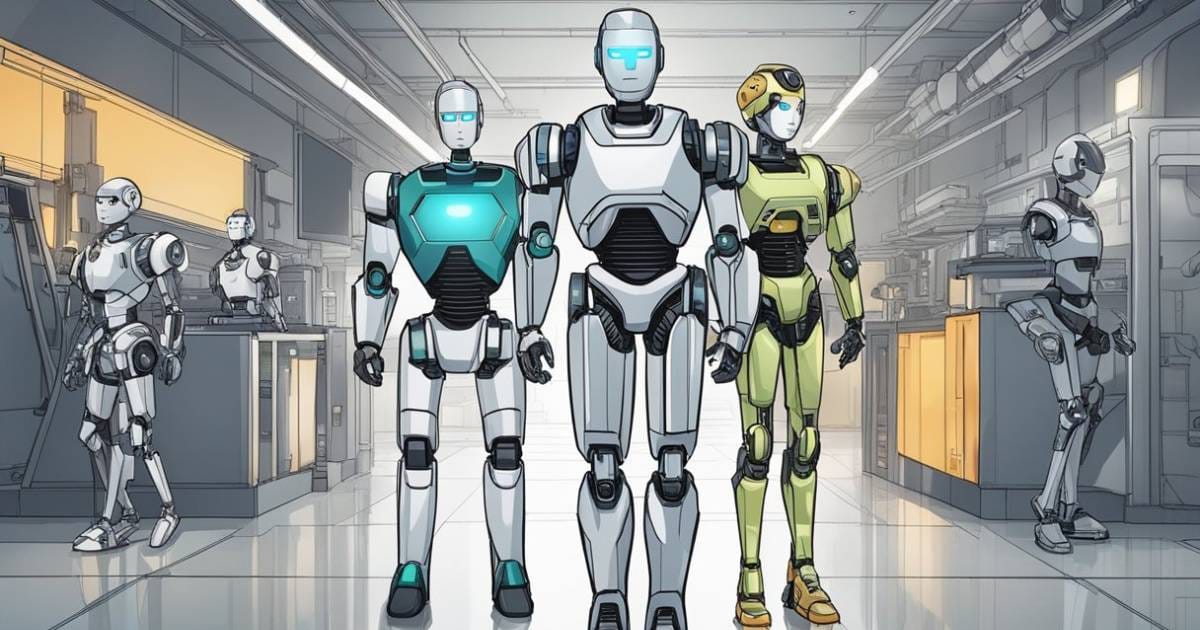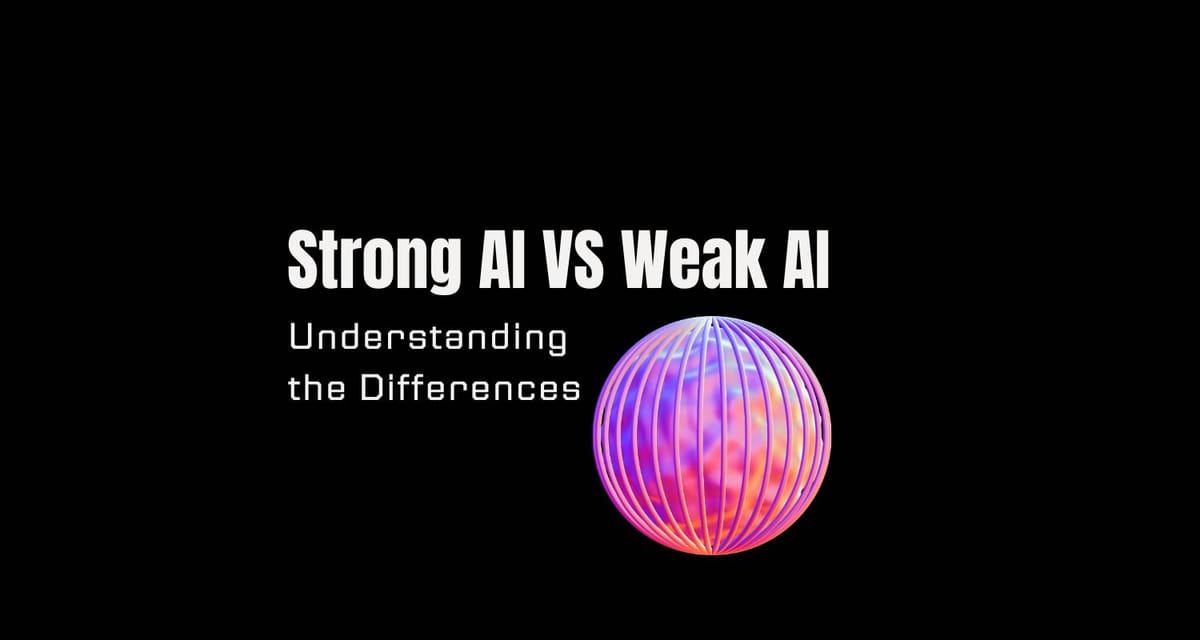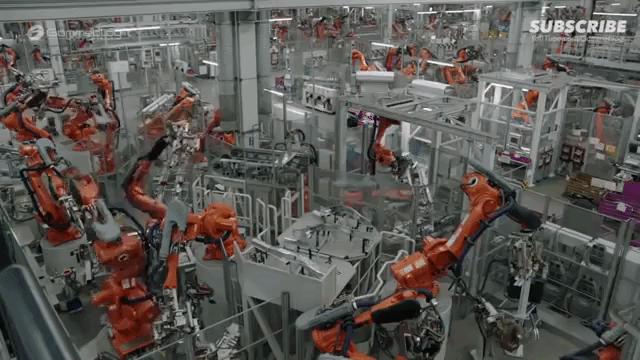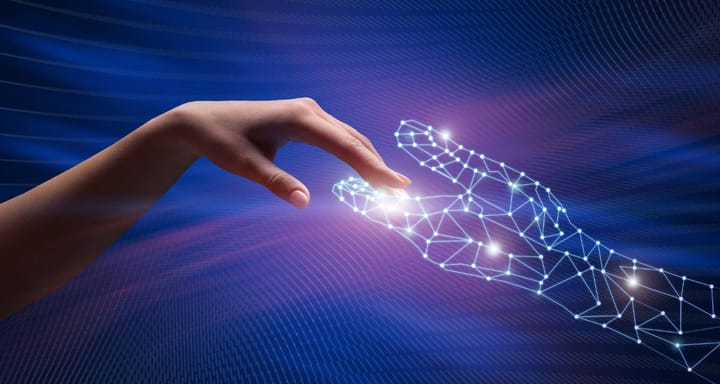What is the Difference Between AI, Robots, Androids, and Humanoids? Explaining Key Distinctions
Lets discuss the differences between AI, Robots, Androids, and Humanoids.

Artificial intelligence, robotics, androids, and humanoids represent a diverse spectrum of technological advancements that are often used interchangeably in conversation.
At its core, artificial intelligence (AI) is the branch of computer science dedicated to creating machines capable of performing tasks that typically require human intelligence. This includes things like problem-solving, pattern recognition, and learning from experience. AI is a broad field that encompasses everything from simple algorithms to complex neural networks capable of mimicking human cognition.

Robots, on the other hand, are physical machines that perform tasks. They may be as simple as mechanical arms in factories or as complex as autonomous vehicles. Robots can be controlled by humans, operate autonomously under pre-programmed instructions, or employ AI to make decisions.
Androids and humanoids are subsets of robots that mimic human appearance or behaviors. Androids are designed to resemble humans physically and may incorporate AI to interact with the environment in a human-like manner. Humanoids share similar goals but might not have an explicitly human-like appearance, focusing instead on human-like function and capabilities.
Key Takeaways
- Artificial intelligence encompasses machines capable of human-like cognitive functions.
- Robots are programmable machines that may or may not incorporate AI.
- Androids and humanoids are robots with human-like appearances or behaviors.
Defining Concepts

Artificial Intelligence
Artificial Intelligence (AI) is the simulation of human intelligence in machines. These systems are designed to mimic cognitive functions such as learning, problem-solving, and pattern recognition. AI is utilized for a range of applications, from route finders in GPS to advanced decision-making algorithms.

Robots
A robot is a programmable machine capable of automatically carrying out a series of actions. Unlike AI, robots are physical entities that interact with the physical world and are often used for dangerous, repetitive tasks, or beyond human capabilities. They can be autonomous or controlled remotely.
Androids
Androids are robots with a human-like appearance, designed to mimic human actions and behaviors. They are often featured with advanced features, such as facial expressions or speech, to enable interactions with humans in social settings.
Humanoids
Humanoids are a subset of robots that resemble humans and have human-like physical structures, allowing them to perform tasks in a manner similar to humans. They might be implanted with AI to enhance their capabilities, but their defining trait is their resemblance to the human body. The company Figure is building a general-purpose humanoid.
Comparative Analysis

This section provides a brief analysis contrasting artificial intelligence (AI), robots, androids, and humanoids, shedding light on their defining attributes and fundamental differences.
AI vs. Robots
AI encompasses software designed to simulate human-like intelligence, involving learning, perception, and problem-solving. AI systems range from Google's search algorithms to Amazon's recommendation engine. Robots are mechanical constructs capable of carrying out tasks, often with AI integrated to enhance functionality. Unlike AI, robotics involves hardware, requiring design, construction, and operation.
Robots vs. Androids
Robots are programmable machines capable of performing various tasks, which can be as simple as repetitive movements on an assembly line or as complex as exploring Mars. Androids represent a subset of robots that are specifically designed to mimic human appearance and behavior, integrating advanced robotics and sometimes AI to interact with humans in more natural ways.
Androids vs. Humanoids
Androids are humanoid robots designed to resemble humans in appearance and actions closely. Humanoids, on the other hand, refer to robots with a human-like structure but do not necessarily have the lifelike skin or realistic features of androids. Humanoids might be employed in diverse environments, from research facilities to entertainment.
AI vs. Humanoids
Artificial Intelligence (AI) focuses on creating systems that can learn, think, and make decisions. Humanoids are the embodiment of robots in human-like forms that may utilize AI to perform tasks or learn from interactions. However, being a humanoid does not inherently mean possessing advanced AI capabilities, as some humanoids are primarily pre-programmed machines with limited adaptability.
Applications

Exploring the various applications, it's evident that each technology has carved out unique roles and uses in society. They optimize tasks, enhance services, and impact daily life.
AI Applications
Artificial Intelligence (AI) has transformative applications that span sectors. In healthcare, AI algorithms assist in diagnosing diseases, such as cancer, more efficiently than traditional methods. AI improves customer service through personalized recommendations and chatbots that handle inquiries and support in business.
Robotic Applications
Robots primarily serve to automate repetitive tasks, particularly in industrial settings. Manufacturing robots can be found on assembly lines where they increase production rates and improve safety. in hazardous environments such as deep-sea or space exploration, robots can operate where humans cannot safely or feasibly go.

Androids in Society
Androids, which are robots designed to resemble humans, play a role in social contexts where human interaction is beneficial.
Humanoids' Role
Humanoids are robots designed with a form that approximates the human body, which allows them to function in environments built for humans. They can be employed for educational purposes, such as reinforcing learning through interaction, and in research, where they help study human-robot interaction and kinematics.
Ex
Technological Foundations

The technological underpinnings of AI, robots, androids, and humanoids lay the groundwork for advancements in multiple fields. Each area requires a specialized set of skills and knowledge, from programming to mechanical design.
AI Development
Artificial Intelligence (AI) focuses on creating algorithms and software that enable machines to perform tasks that typically require human intelligence. AI leverages data, machine learning, and cognitive modeling to empower applications with speech recognition, decision-making, and visual perception capabilities.
For example, AI drives self-aware robots into new territories by enhancing their adaptability.
Robot Engineering
Robotics is about the design, construction, and operation of robots. Engineers use knowledge of electronics, mechanics, and software to build robots that can interact with the real world. Robots vary in complexity from simple, non-intelligent machines to those incorporating sophisticated AI, like basic cobots that work alongside humans.
Android Design
Androids are robots designed to resemble humans not just in appearance but also in actions. Crafting androids involves integrating robotics with lifelike aesthetics to create entities that can mimic human gestures and expressions. This requires advanced materials and control systems to achieve the desired level of human-likeness.
Humanoid Construction
Humanoids extend androids' human-like aspect by intricately emulating human form and behavior. Their construction involves complex articulation and balance systems, ensuring they can navigate and operate in environments tailored to humans. Humanoids are built with a blend of robotics and biologically inspired complex articulation and balance systems design principles to engage in diverse human activities.
Future Implications

The progression of artificial intelligence (AI), robotics, androids, and humanoids is set to transform the future landscape of technology significantly. Each brings a unique set of advancements and opportunities.
Advancements in AI
AI is anticipated to experience considerable growth beyond its current capabilities. According to MIT Technology Review, not only will AI become more accessible to the general public, but it will also see an increase in specialized applications, driving innovation across various sectors. A shift is expected towards generative AI, enhancing creative processes and problem-solving.
Robotics Evolution
Robotic technology is on the verge of becoming even more intertwined with daily life. As forecasted by experts such as Pieter Abbeel, our homes and workplaces will rely more heavily on the functionalities of advanced robots, which can be read about on the World Economic Forum site. Integrating intelligent sensor technology and AI in robots points towards a future where they perform tasks more autonomously and precisely.
Androids' Future
Androids, robots designed to mimic human appearance and behavior, are predicted to advance in emotive and cognitive abilities. As suggested by insights shared on MIT Sloan, the next generation of androids could work alongside humans, enhancing our capabilities and even offering 'superpowers' through augmented strength or computational intelligence.
Humanoids' Prospects
The prospects for humanoids, which are robots resembling the human body and mechanics, involve more sophisticated interactions and contributions to fields like healthcare and service industries. Humanoids may one day provide assistance with tasks that require a human touch (Our World in Data).
Each of these areas is poised for significant progress, poised to alter society's technological and social fabric. The advancements will likely redefine the boundaries of human-machine collaboration.



